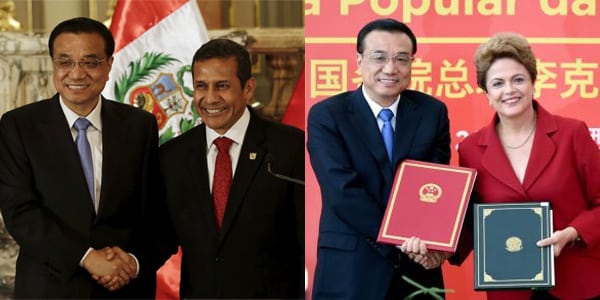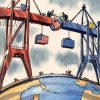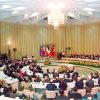
Some years ago there was talk of Chinafrica, especially in French analyses. The term Chinamerica, in turn, was originally used to describe the relations between Beijing and Washington. But it then began to be applied as the description of a new reality that had emerged over the previous decade, linking China and Latin America. The eight day visit by Premier Li Keqiang to Brazil, Colombia, Peru and Chile, generating a string of contracts and projects –and following in the wake of the two visits by President Xi Jinping–, seems to point to a new future, more integrated although certainly in a relatively uneven manner.
Chinese trade, for instance with Brazil, has multiplied by 12 over a decade and China is already the country’s biggest economic partner. Its importance has become even greater to the Brazilian authorities now that the economy has slowed down. The relationship has allowed Latin America to grow, although, again, with an over-reliance on the export of raw materials. Thus, when the Chinese economy slowed down, some Latin American economies stopped in their tracks. But China is certainly an important part of the Latin American future (and of that of Europe and many others).
China wants the relationship to grow, most certainly in the field of commodities. Hence, apart from its interest in Brazilian oil, the largest project whose feasibility study has been signed by Li and Dilma Rousseff, along with Peru, is for a transoceanic railway connecting the Atlantic and Pacific oceans, with a terminus on the Peruvian coast, to transport soy, iron ore and other products, Its estimated cost ranges from US$4.5 billion to US10 billion for the northern connection through Amazonia alone. According to the President, it will open for Brazil ‘a new route to Asia’.
Latin America is in need of foreign investment, especially in infrastructure. According to a report by fDi Markets, foreign direct investment has fallen by 39% in the region, due also to lower growth (Mexico and Brazil continue to lead). Hence, Chinese investments are more than welcome. Moreover, a report by UNCTAD notes that foreign investments from emerging economies are growing rapidly, at US$484 billion in 2014, ie, 30% more than in the previous year, of which more than half are from China (including Hong Kong), which has become the world’s largest investor, only behind the US. ‘Chinamerica’ is just part of this new landscape. In fact, China and the CELAC (Community of Latin American and Caribbean) signed last January a cooperation plan that seeks to increase trade, investment, plus exchanges in technological and other dimensions.
China, furthermore, is in need of opening up new markets for its infrastructure industry, especially railways, which has developed enormously but in a domestic market that is slowing down. The government has merged its two major companies to avoid them competing with each other by applying downward prices in international projects. The transoceanic railway would allow China to bypass the Panama Canal, which it considers to be too firmly under US control. Thus, it is all part of the overall power game, but with a geo-economic rather than geopolitical twist. And it is also geo-social: it is no coincidence that in addition to interests such as investments in copper mines, the second prime destination of Li’s tour has been Peru. The latter has Latin America’s largest Chinese ethnic population. As the chairman of the Peruvian Council of Ministers, Pedro Cateriano, said when he received Li at Lima’s National Archaeological Museum: ‘The distance between Peru and China is only geographical; for Peruvians, contact with Chinese people has been a normal and everyday occurrence since childhood’.
Carlos Malamud has noted that Latin America, even while taking advantage of the opportunities offered by China, should resist four kinds of temptations: (a) to believe this is a way of breaking free from the US; (2) to bet on a strategic bi-regional relation –Beijing prefers bilateral accords but now also seems to be very interested in linking up with the Pacific Alliance (Chile, Colombia, Mexico and Peru)–; (3) to profit from the Chinese manna from heaven; and (4) to trust in the omnipotence of its primary exports, especially food, which, as has been said, has led it to under-invest in a different future. It could be said that an additional temptation is to stop looking at Europe at the same time, but Dilma Rousseff (and the Uruguayan Tabaré Vazquez) are also counting on the EU, with or without Mercosur.
The development of this Chinamerica concept also increases the attraction to Chinese eyes of the Spanish companies operating in Latin America, and should reinforce Spain’s interest in China. There has been much talk for a long time of a new-style triangulation.


